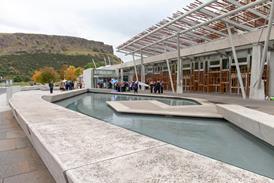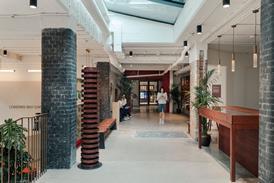The National Trust has launched a campaign to extend the number of London’s protected views. But will this really preserve key vistas asks Thomas Lane

The National Trust has launched a campaign to extend the number of protected views of St Paul’s Cathedral from strategic points in the capital.
While this is ostensibly to mark the 80th anniversary of St Paul’s Heights, the original mechanism for protecting views of the cathedral, there is a more serious side to this as the National Trust wants to feed into the consultation for revisions to the London Plan.
The reason why the National Trust is taking up this cause is because only four of the 13 fully protected vistas are in south London. The Trust is collaborating with the Horniman Museum by setting up an installation in its gardens, on the grounds that these afford one of the finest – but unprotected – views of London. The public will be able to comment and this will feed into the consultation.
But the Trust’s campaign is somewhat disingenuous. It doesn’t explicitly say that protection only extends to views of St Paul’s, which suggests the whole view from one of these strategic points is protected.
This isn’t the case – views of St Paul’s are protected within a defined viewing corridor, which can be widened or narrowed, but there is no statutory protection for the rest of a vista.
The view from Greenwich Park is a good demonstration of the limited nature of the protection. The view of St Paul’s is on the extreme left from the designated viewing point, the General Wolfe statue. The most dominant view is of the wall of towers at Canary Wharf and more recently South Quay which includes last year’s Carbuncle Cup winner, Lincoln Plaza. These buildings tower over two other London landmarks, Wren’s Old Royal Naval College and Inigo Jones’ Queen’s House, which together make up one of London’s most famous vistas.
It is inequitable that south London has so few protected views and it is right to consider extending protection to the Horniman Museum’s gardens but this won’t stop a wall of towers being erected on either side of the view of St Paul’s. Given the unprecedented, almost random and uncoordinated growth of tall buildings in London this is a good time to consider a strategic framework for towers that offers more up-to-date, holistic protection for London’s views.















5 Readers' comments